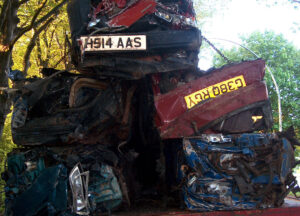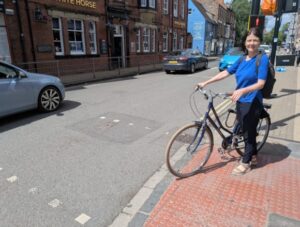Details of the options under consideration for a Low Emission Zone in Edinburgh have emerged, with documents suggesting that the city council is considering restrictions on passenger cars in certain parts of the city-region.
Edinburgh is one of four Scottish cities required to implement a Low Emission Zone by 2020, in order to address exceedances of the 40µg/m3 legal limit for nitrogen dioxide emissions.
In some locations, buses are a significant contributor, in other locations cars are the dominant source of emissions, the city council has notedAt a meeting of the city council’s Transport and Environment Committee on Thursday (17 May), councillors will hear an update on ongoing work to prepare for the introduction of the LEZ from 2019 — including options being explored for the size and scope of the zone.
Documents published ahead of the meeting suggest that ‘combinations of LEZ options are being explored’, based around ‘geographic limits and vehicle types’.
The report states: “Geography-based options under consideration include an Edinburgh-wide LEZ, a focus on the city centre, and LEZs that target emissions ‘hotspots’ across the city.
“Vehicle type approaches consider the emissions contributions of various types of vehicles (cars, buses, light and heavy goods vehicles and taxis). Based on emissions standards, restrictions could be applied to ensure that only the cleanest vehicles operate in certain areas.”
Sources
According to the documents, the final option to be considered will need to take into account the different sources of emissions in different parts of the city.
The report notes: “In some locations, buses are a significant contributor, in other locations cars are the dominant source. This needs to be factored in to the types of vehicles that LEZs restricts and how LEZs work cohesively across the city.”
Consideration will also need to be made of the likely impact that the introduction of an LEZ would have on the dispersion of traffic would have throughout the city. The report adds: “Edinburgh’s road network carries a range of vehicle movements (including by mode and by origin/destination), particularly compared to cities with grid-style network supporting hierarchies of movement (motorways, arterials, and suburban roads).
“This makes it difficult to isolate a specific zone without affecting the rest of the network. Edinburgh’s LEZ development will need to consider how traffic dispersion is managed around any boundary, particularly should a hot-spot approach be taken.”
However, according to the council, the city’s geography provides an opportunity ‘to influence the way that journeys are made into the area’ in tandem with initiatives such as freight hubs which could be employed to reduce vehicle movements in polluted areas.
Source: The City of Edinburgh council“Edinburgh’s geography with sea and city bypass border provides a natural cordon around the majority of the City’s road network. This offers Edinburgh a unique opportunity to influence the way trips are made into the area.
“For example, the park and ride/public transport may replace trips previously taken by vehicles which do not meet the emissions standards. Similarly, freight logistics hubs outside the city could be supported in order to incentivise lower-emission vehicles servicing Edinburgh. Strategic Development Areas such as the Bio Quarter, means Edinburgh could apply a LEZ in tandem with coordinated transport investment that supports active travel and public transport.”
At the meeting, councillors will be asked to approve the continued development of the proposals for the Low Emission Zone, whilst also agreeing to a stakeholder engagement programme to ‘test and inform the impact of implementing low emission zones in Edinburgh’.
Cities
Other cities in Scotland required to draw up plans include Dundee, Aberdeen and Glasgow — which has already outlined some of its proposals for the implementation of an LEZ from late 2018.
The Glasgow plans an initial focus on securing cleaner bus services within the city, in an area currently covered by the city’s air quality management area, from the end of 2018 (see airqualitynews.com story).
As part of this, all bus services operating within the low emission zone will be required to meet at least the Euro VI emission standard, within four years of the introduction of the LEZ.
This would then be extended to cover some of the most polluting taxis and private cars at a later date.
Related Links
Report: Developing Low Emission Zones in Edinburgh
















